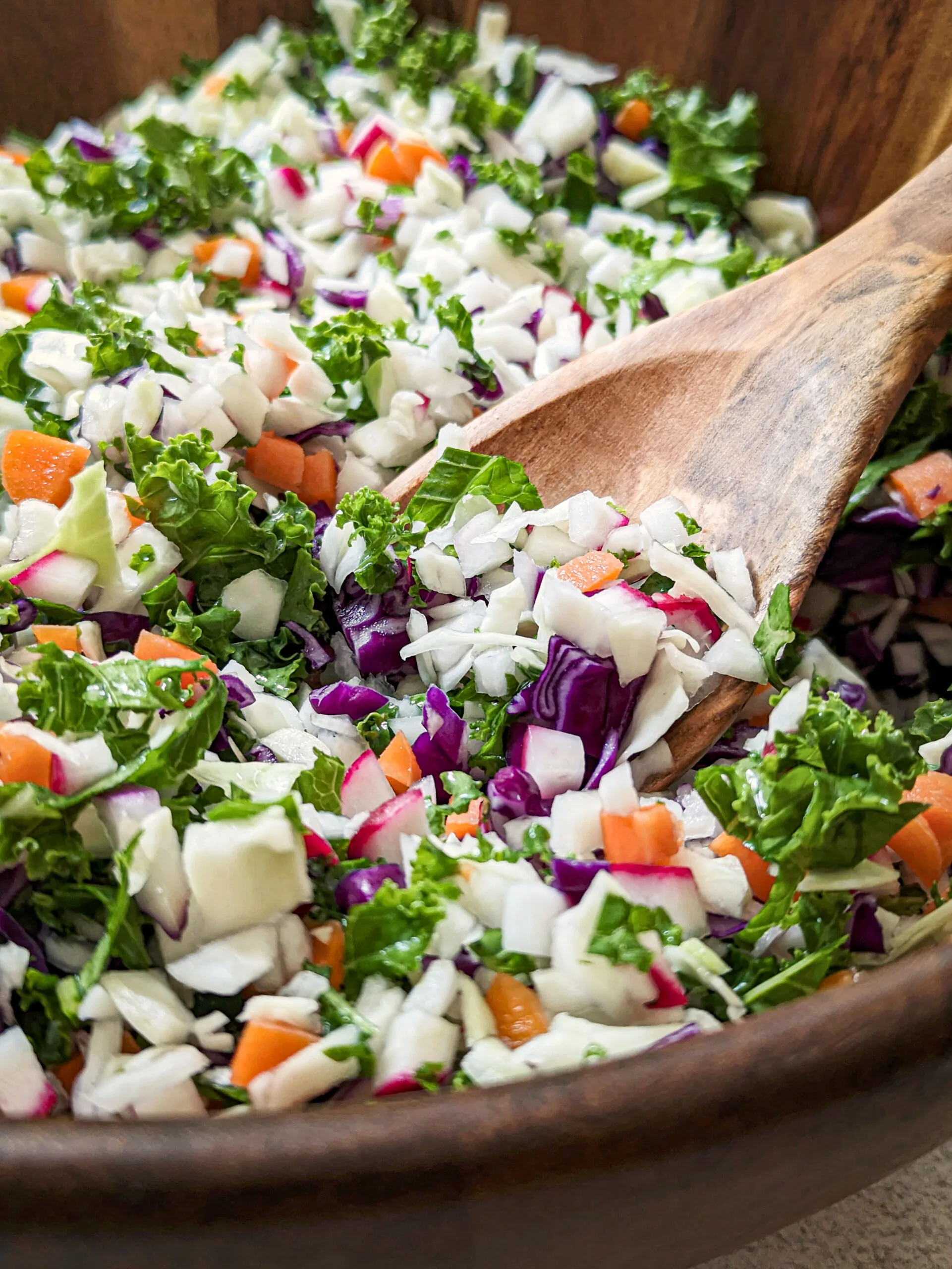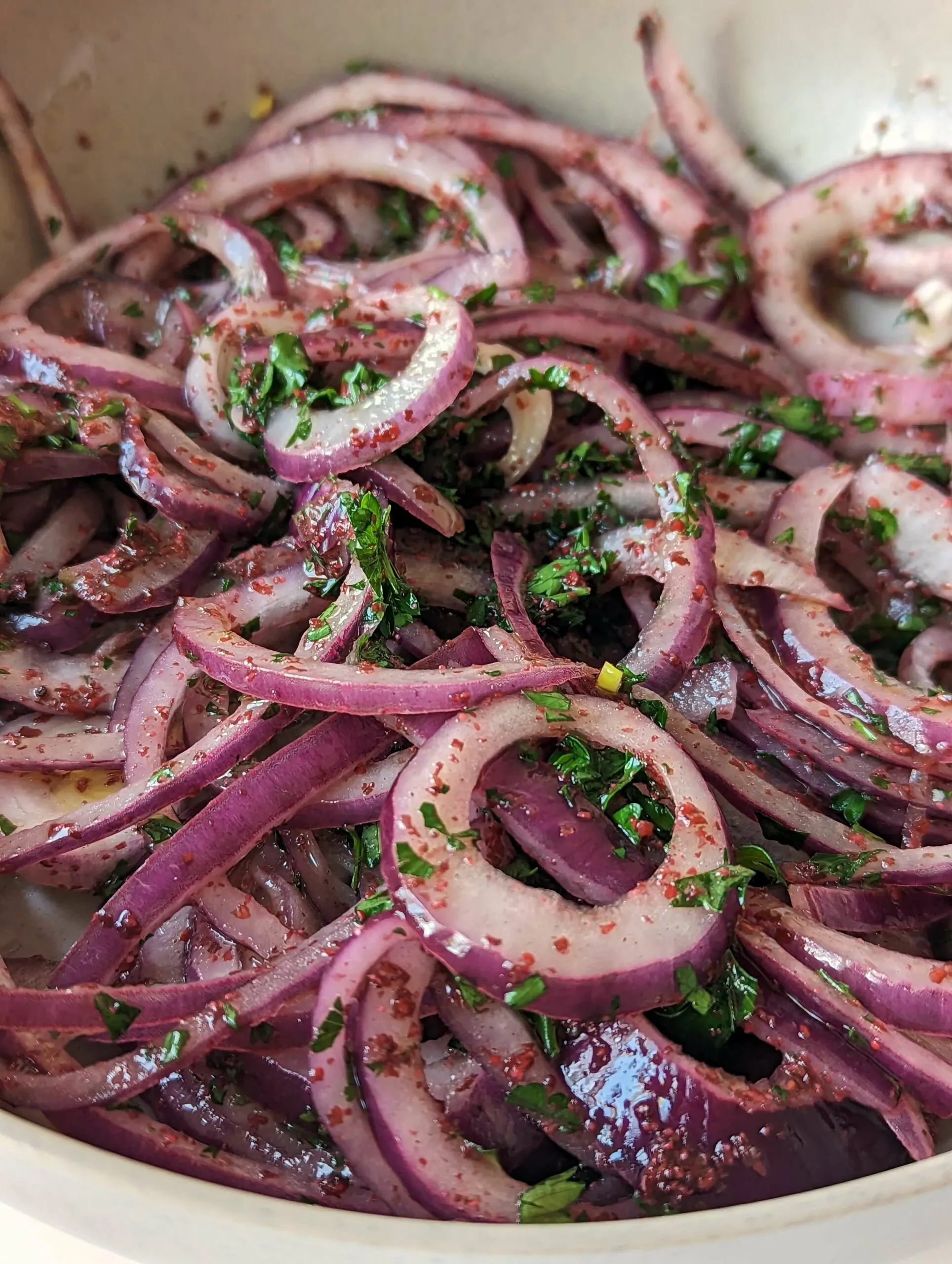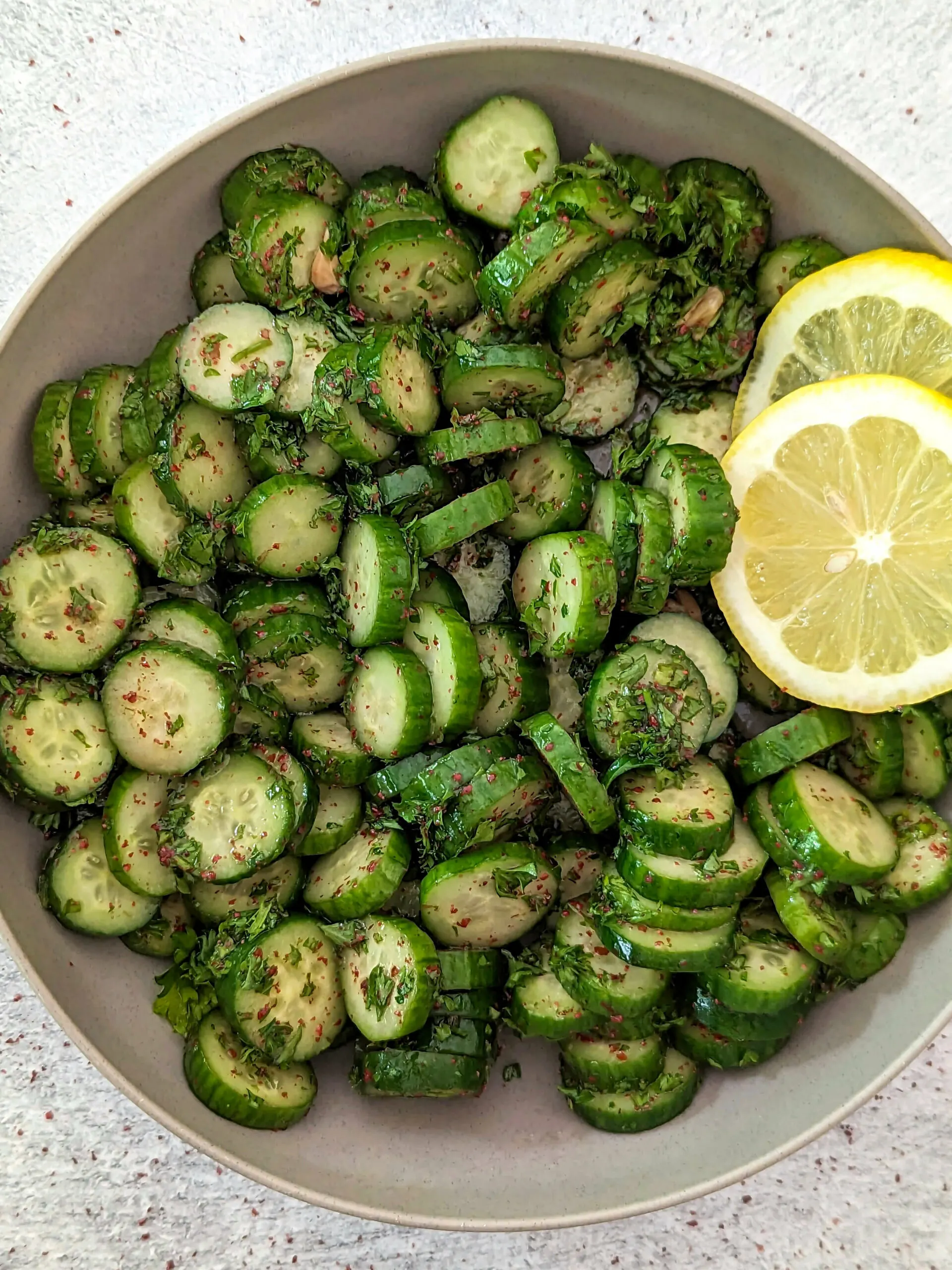Whip up tangy, salty Japanese pickled Napa cabbage! Our hakusai recipe includes cabbage, carrots, kosher salt, red chilies, and umami-rich kombu for a deliciously mild flavor. Enjoy the salted pickled cabbage with steamed white rice, or serve it as a side dish alongside savory meals like furikake salmon.
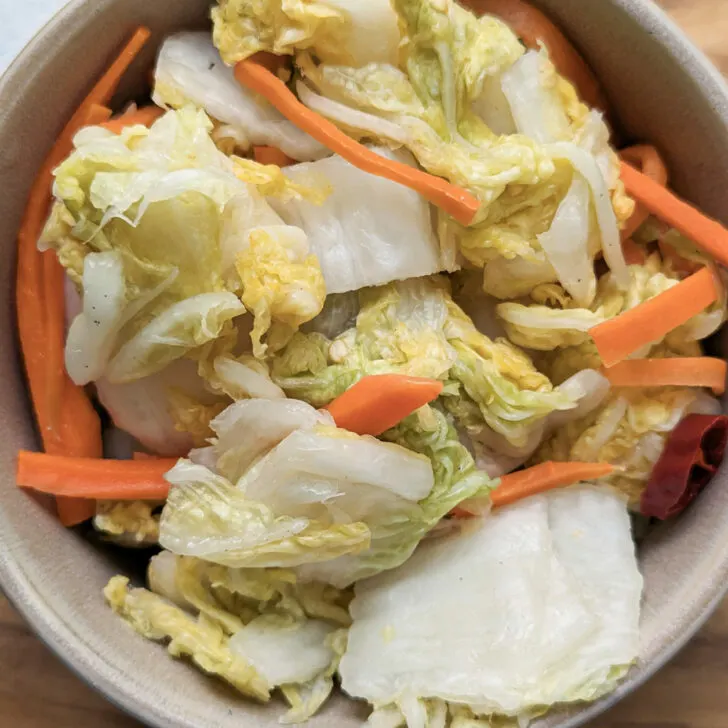
What is Napa Cabbage?
Napa cabbage is a cruciferous vegetable with an elongated shape and pale green, yellowish leaves that are tightly packed and crisp. The cabbage is mild in flavor, making it a popular addition to stir fry, soup, salad, braised dishes, and pickled sides like kimchi and this hakusai recipe!
Find Napa cabbage in grocery stores, or visit a local Asian grocery store. It’s located in the produce aisle, alongside other leafy greens and cabbages.
Ingredients You’ll Need
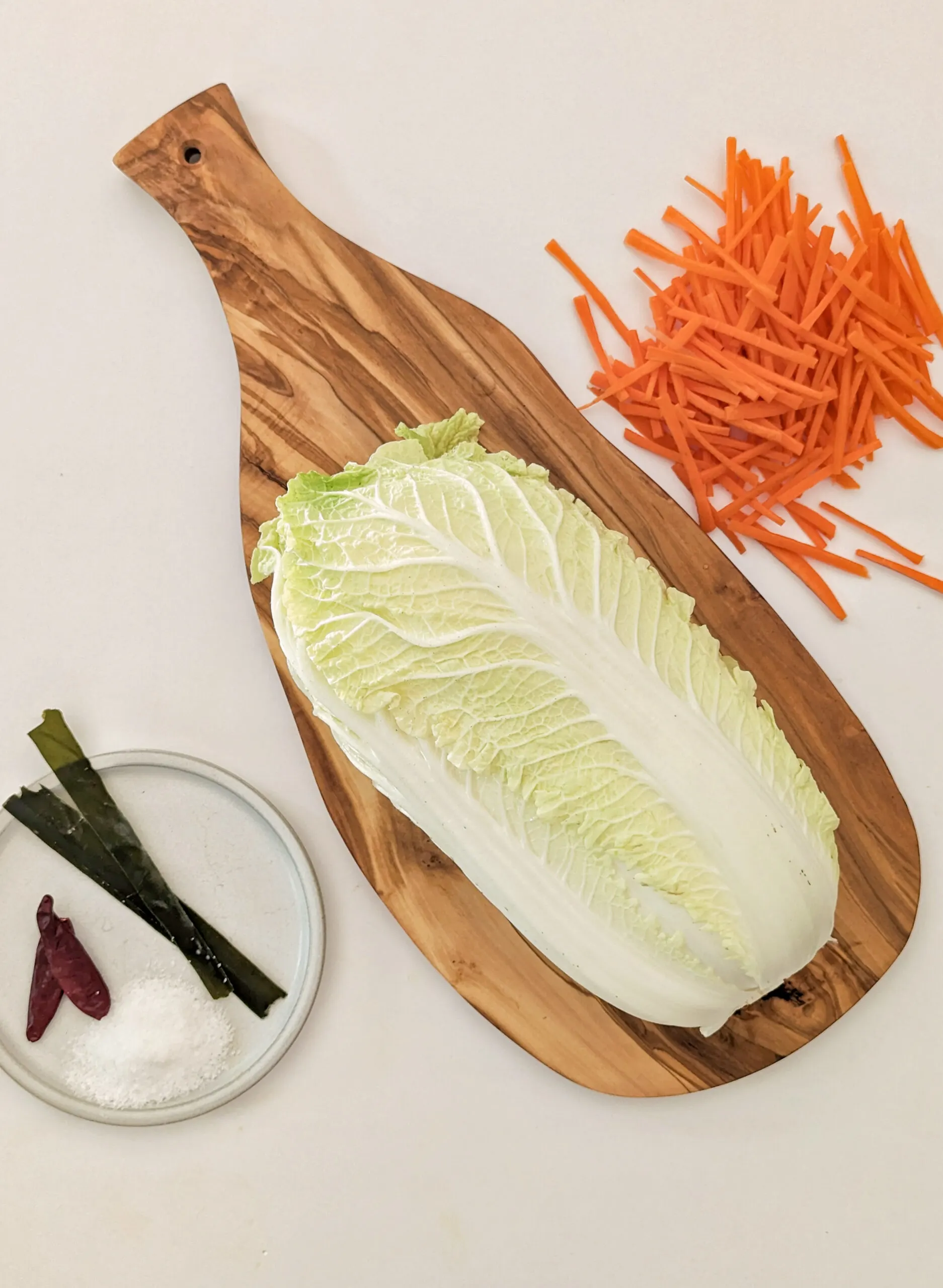
- Napa Cabbage: Cut a medium Chinese cabbage, called hakusai in Japanese, into smaller bite-sized pieces for this recipe; you can use bok choy, savoy, green, or pointed cabbage as a substitute for Napa cabbage.
- Carrots: Carrots are optional, but I love the sweetness they provide to the cabbage.
- Kombu: Kombu is an edible seaweed or kelp; it comes in many forms but we used rishiri kombu. You will find it in local Asian markets or online.
- Dried Japones: If you prefer your pickles slightly spicy like I do, add dried Japanese chilies or arbol chilies. You can also use one teaspoon of red pepper flakes if that’s what you have on hand.
- Kosher Salt: I used kosher salt because I usually have some in the pantry, but coarse sea salt also works.
Additions and Substitutions
You can use a variety of vegetables to make Japanese pickles or tsukemono (TSKEH-mohnoh), such as daikon radish, cucumber, plums, eggplant, shallots, or cabbage! And for this Japanese pickled cabbage recipe, you can include ingredients like scallions, fresh garlic, fish sauce, soy sauce, or sesame oil to change up the flavor.
How to Make this Napa Cabbage Hakusai Recipe
The full recipe with measurements is in the recipe card below.
Step 1: Wash the Napa cabbage and remove any outer leaves that are wilted or damaged. Use a sharp knife to cut the cabbage into quarters lengthwise, then cut them into bite-sized pieces.
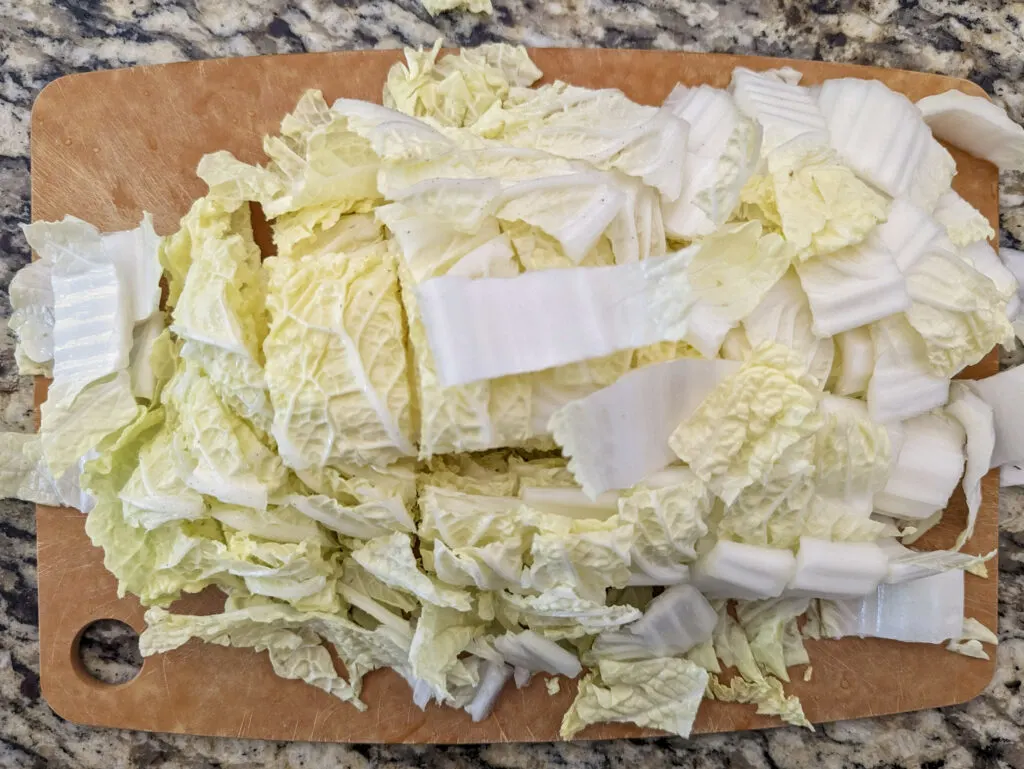
Step 2: Add the cabbage to a gallon silicon or plastic bag.
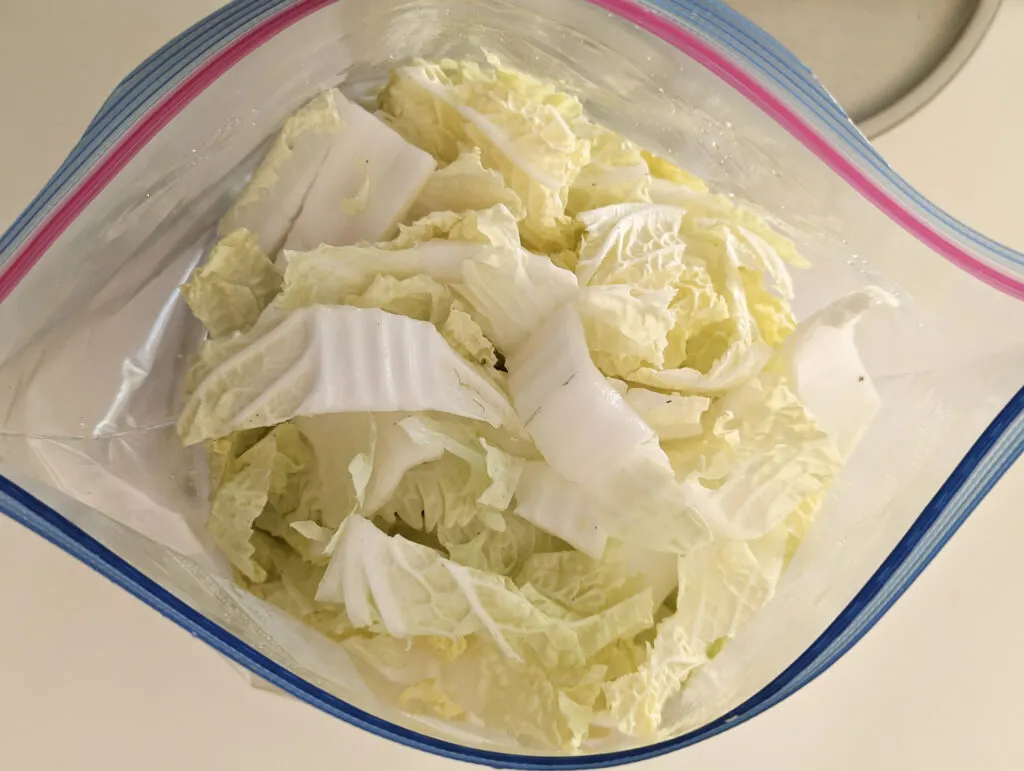
Step 3: Next, add the carrots, kelp (cut with kitchen scissors), dried chilies, and salt.
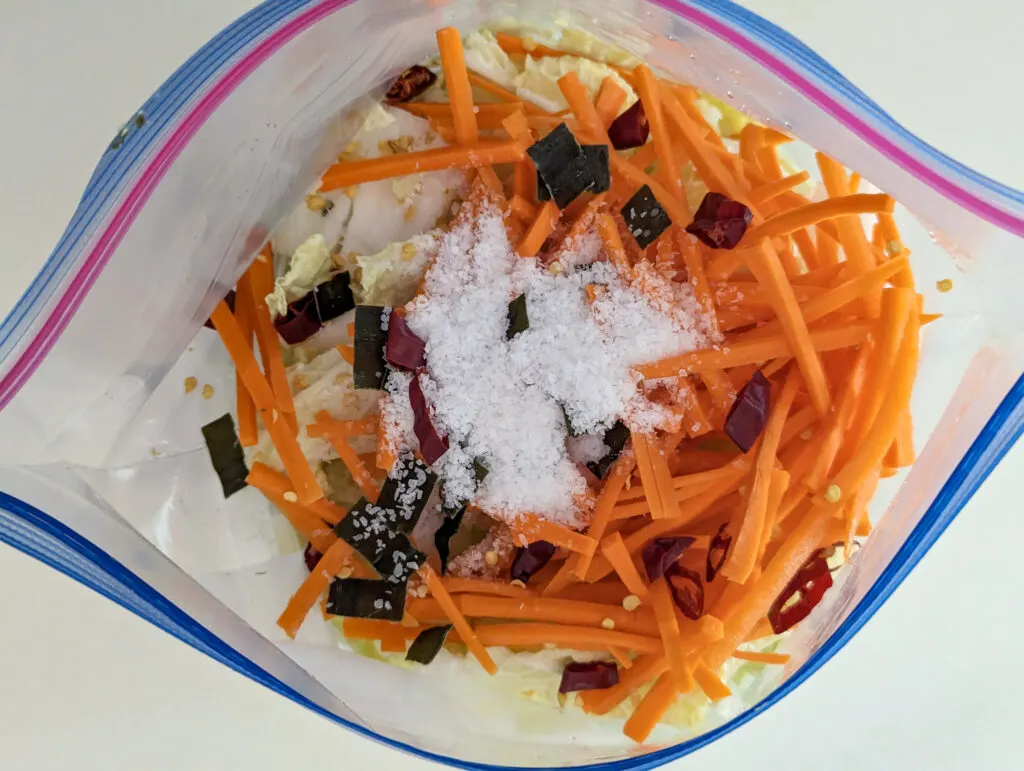
Step 4: Seal the bag and massage the ingredients to combine.
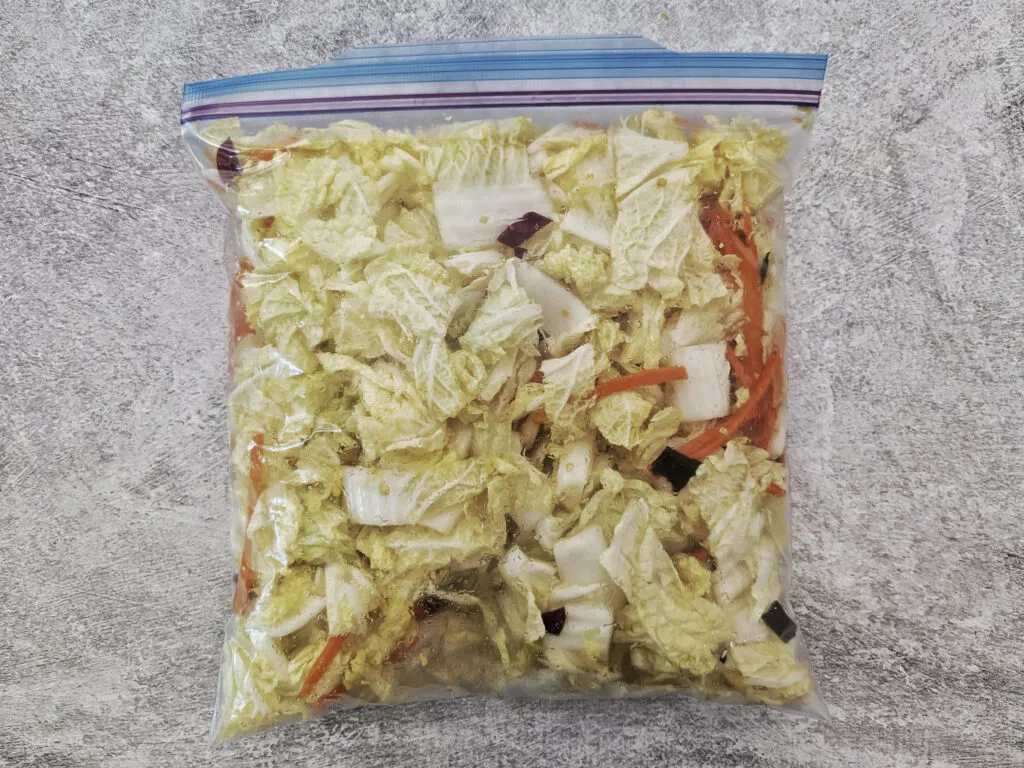
Step 5: Open the bag and press out any excess air before sealing it.
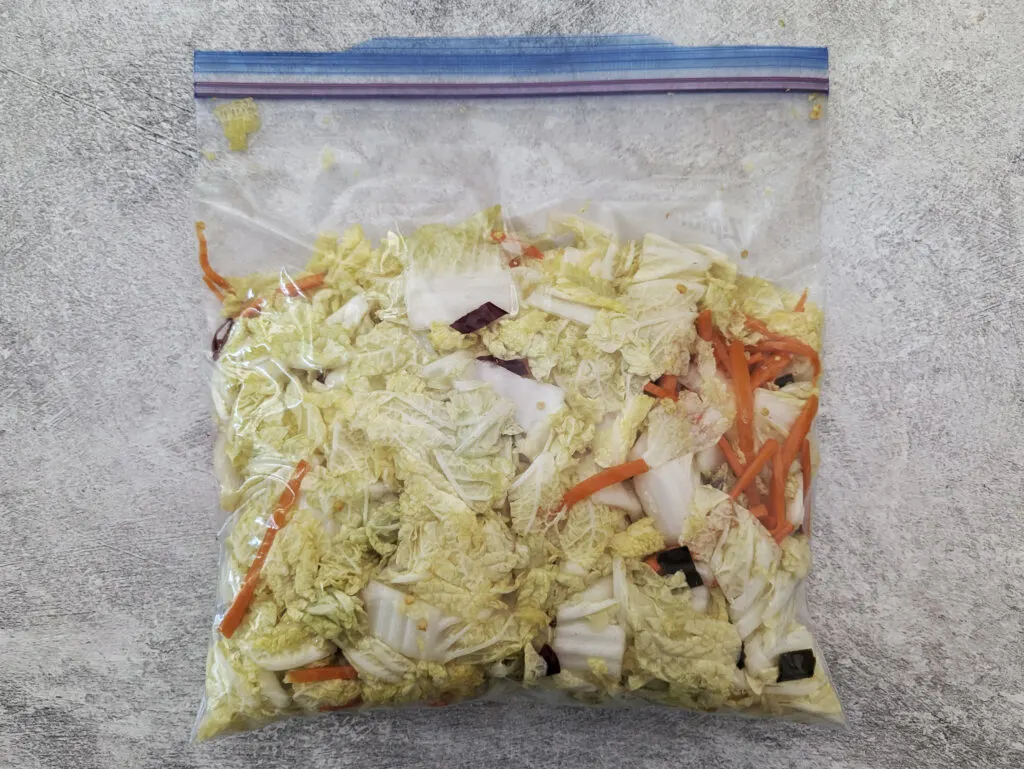
Step 6: Cover the bag with a plate and place something weighted on top to press the water out. Let it sit at room temperature for 2-4 hours.
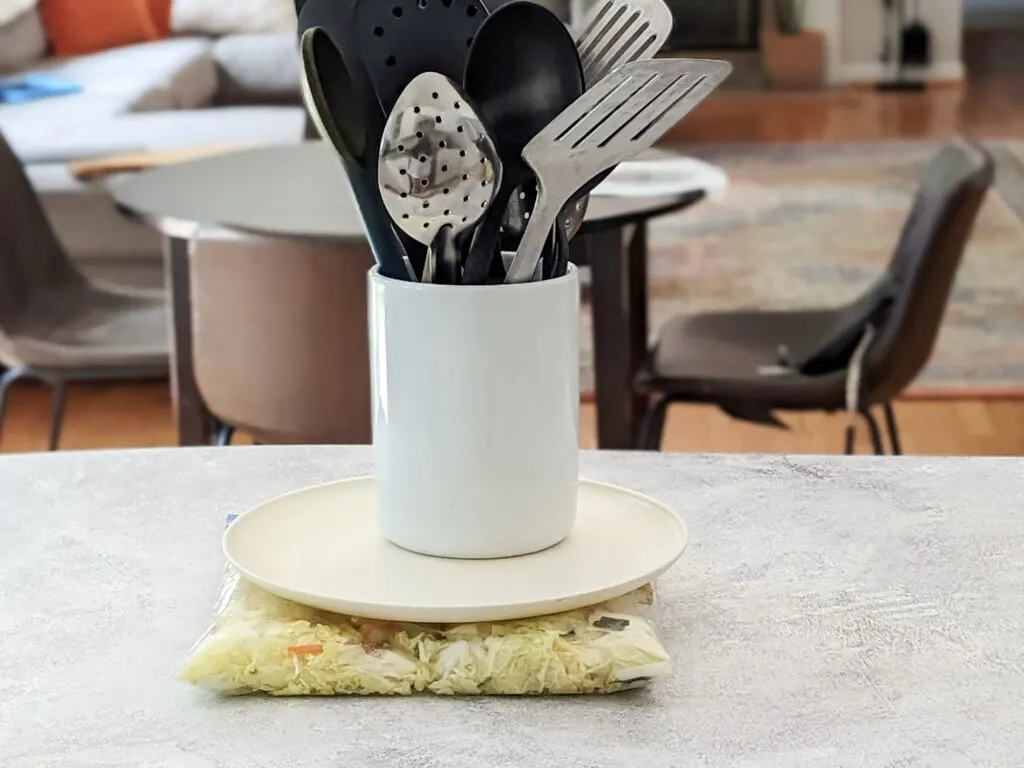
Step 7: Squeeze the cabbage mixture to remove any excess moisture, and enjoy!
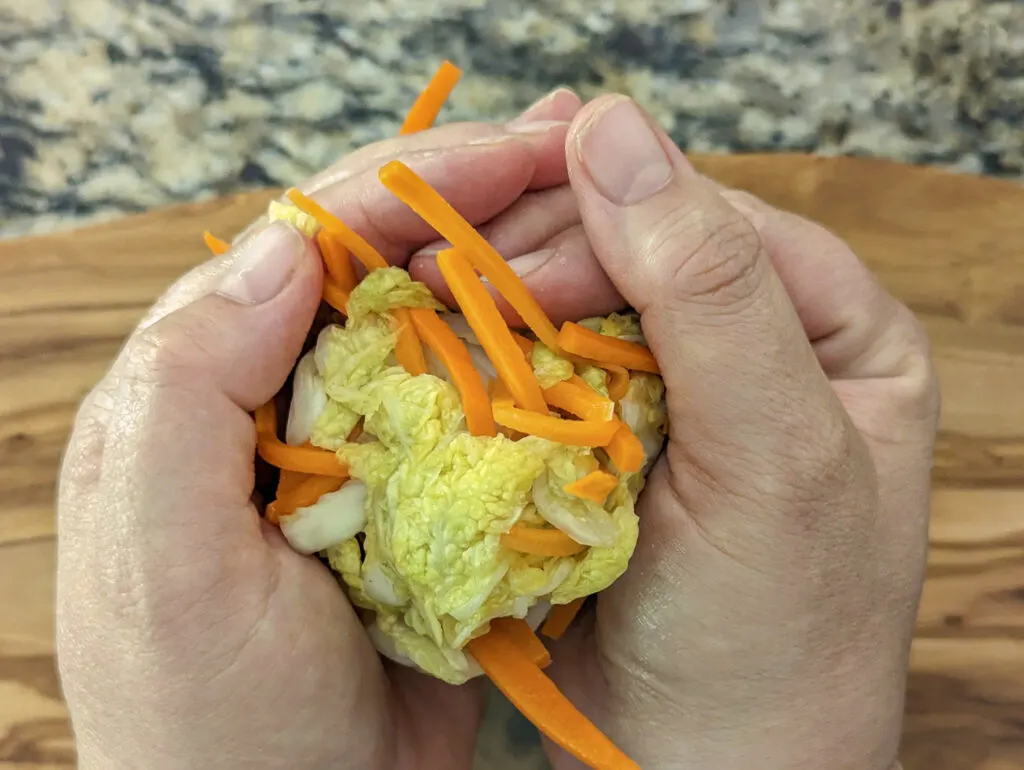
Expert Tips
- Make hakusai using a traditional shiozuke (tsukemonoshio-zuke) method. Begin the process by generously salting the cabbage with kosher or sea salt. Then, place a weighted object on the container to press the water out of the vegetables and infuse them with flavor, much like our Swedish pressgurka.
- Don’t skimp on salting – it’s crucial for drawing out excess moisture and enhancing flavor.
If you enjoy this recipe, try one of these vegetable side dishes!
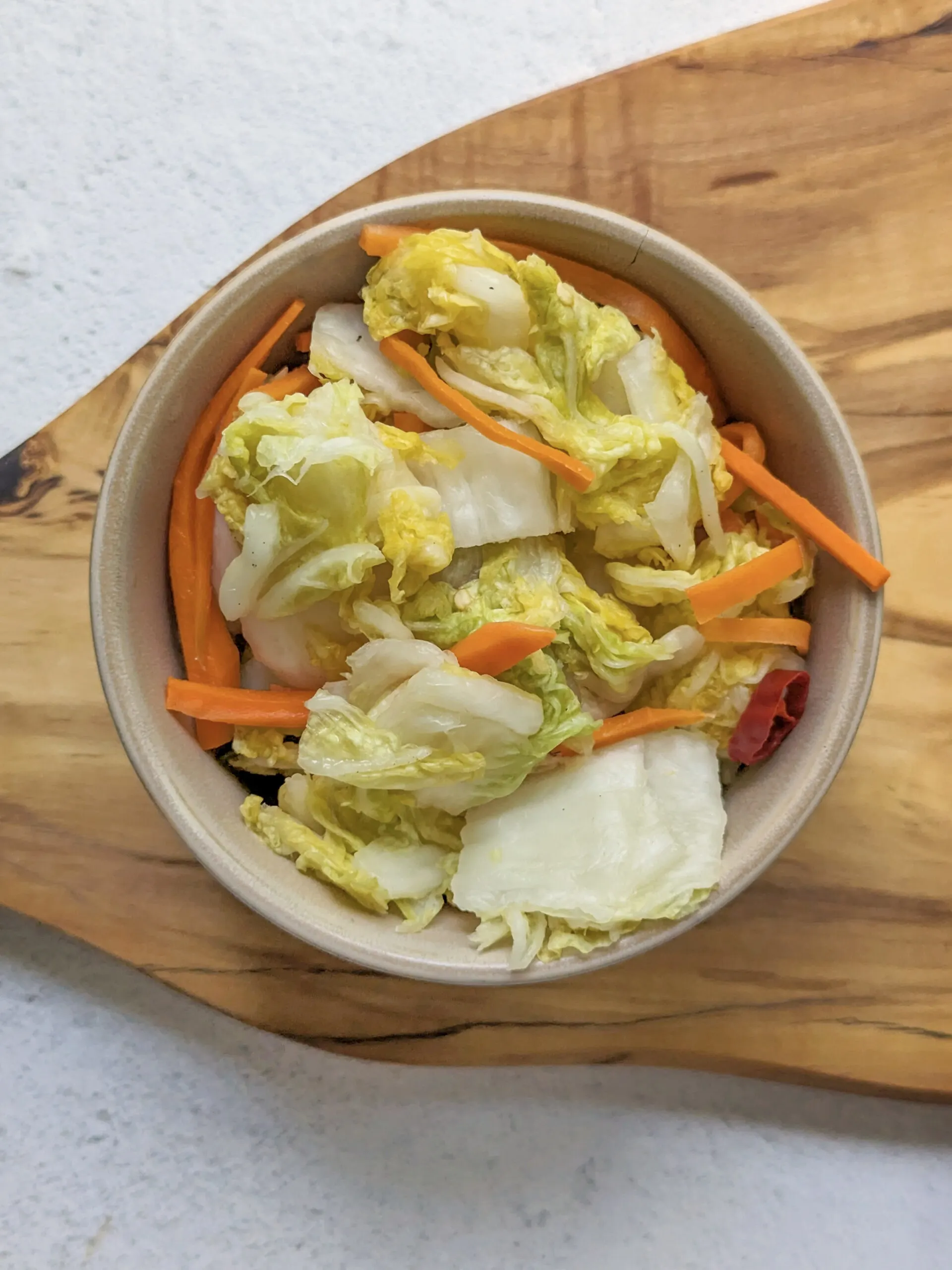
Serving Suggestions
Enjoy hakusai no shiozuke with steamed white rice or miso soup, as is tradition. Or you can serve them as a side dish with lighter meals like Sriracha salmon, and the pickled cabbage is a tasty addition to noodles, sandwiches, salads, and bowls like sesame salmon bowl.
What to do with the Leftovers
- How long does pickled cabbage last? Store leftovers in an airtight container for 5-10 days.
- Freeze – Store leftover cabbage in an airtight container or bag. Pickled cabbage freezes for 12-18 months, but the taste and texture will change once frozen.
- Thaw – Before serving, defrost it in the refrigerator overnight.
Frequently Asked Questions
What makes Japanese pickling or tsukemono unique?
In contrast to Western pickling techniques that use vinegar for pickling, Japanese pickles do not typically involve a vinegar brine. Instead, the pickling process relies heavily on salt and pressure.
What does Napa cabbage taste like?
Napa cabbage has a mild, delicate flavor that is slightly sweet and peppery. Its taste is more subtle compared to green cabbage.

Hakusai Recipe
- Gallon Silicone Bag or Plastic Bag
- 1 small Napa cabbage (hakusai), cut into bite-sized pieces
- 1 medium carrot, peeled and julienne
- 1 strip rishiri kombu, cut into 1-inch pieces
- 2 dried Japones pepper, chopped
- 1 tablespoon kosher salt
- toasted sesame seeds, for garnish
- Wash the Napa cabbage and remove any outer leaves that are wilted or damaged. Use a sharp knife to cut the cabbage into quarters lengthwise, then cut them into bite-sized pieces.
- Add the cabbage to a gallon silicon or plastic bag with the carrots, kelp (cut with kitchen scissors), dried chilies, and salt. Seal the bag and massage the ingredients to combine.
- Open the bag and press out any excess air before sealing it. Cover the bag with a plate and place something weighted on top to press the water out. Let it sit at room temperature for 2-4 hours.
- Squeeze the cabbage mixture to remove any excess moisture, and enjoy!
- Make hakusai using a traditional shiozuke (tsukemonoshio-zuke) method. Begin the process by generously salting the cabbage with kosher or sea salt. Then, place a weighted object on the container to press the water out of the vegetables and infuse them with flavor, much like our Swedish pressgurka.
- Don’t skimp on salting – it’s crucial for drawing out excess moisture and enhancing flavor.
- The nutritional information shown is an estimate provided by an online nutrition calculator. It should not be considered a substitute for professional advice.

